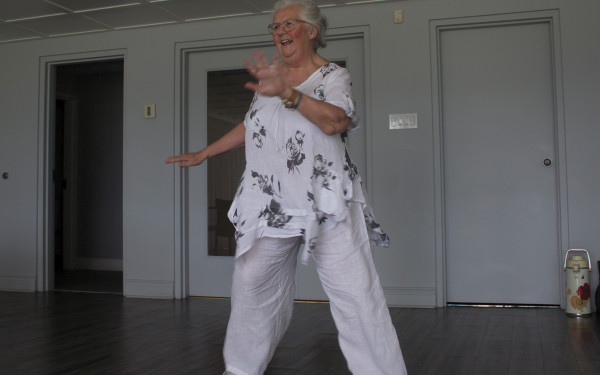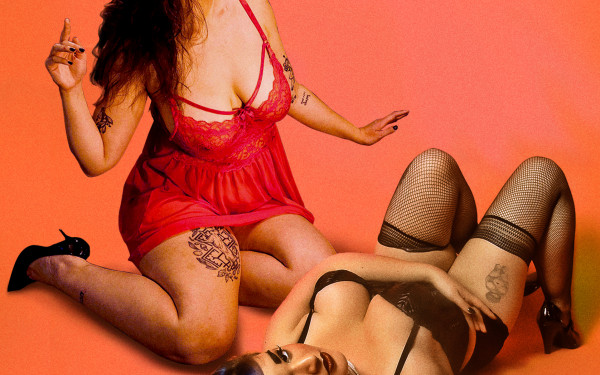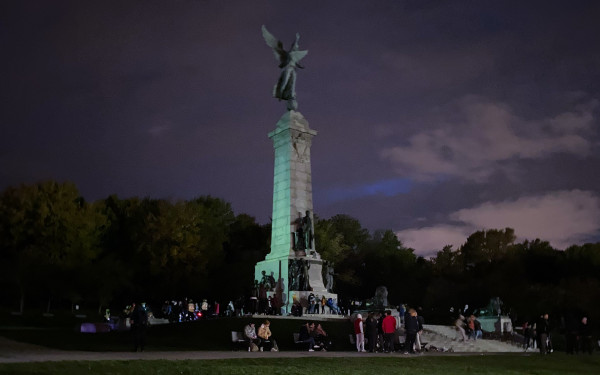Hot Feet, Cool Head
Montreal’s Capoeira Community Teaches More Than Street Fighting
At the surface, capoeira appears to be nothing more than a game—a “war dance” that flows to a series of non-verbal cues to music.
A circle of people clap and play instruments around two fighters who try to fake each other out to the beat with call-and-answer kicks and takedowns until someone from the circle tags out one of the fighters and takes their place. The cycle continues until the music dies out.
Behind the dance, however, is a martial art rooted in African tradition via Brazil—and its practice is as much about combat as it is about music, philosophy and community.
“You don’t want to make your movements obvious,” said Ron Scott, one of the leaders of the Fundação Internacional de Capoeira Angola’s Montreal Study Group; he also teaches capoeira Angola at Concordia.
“Unlike Asian martial arts, it’s not just about punch-punch-punch, strike-strike-strike, kick-kick-kick,” Scott said. “You are seeking to be as vulnerable as you can and in that vulnerability still remain unfazed. We don’t say ‘Let’s go fight,’ we say, ‘Let’s go play.’”
Scott calls capoeira a “physical discourse” where a kick is a question and evading is the answer. These physical conversations test capoeiristas in terms of cunning and resourcefulness.
“They try to use everything, from intuitive to physical—anything they can to survive,” he said.
Capoeira has multiple styles. The one Scott teaches, Angola, seeks to stay as close to its roots as possible.
While other capoeira styles evolve and have incorporated elements of Asian martial arts such as practicing barefoot, those who practice capoeira Angola wear shoes. Capoeiristas in the Angola style do so as a symbol of freedom and to reference capoeira’s passage through slavery, as slaves weren’t allowed to have footwear.
“You can’t live in the past. [You have to] be anchored in the present,” Scott said.
“But know that everything that happened in the past is going to affect the way things are going to unfold. In order to know where you’re going, you need to know where you’re coming from.”
That means knowing that the African diaspora manifested in capoeira. It appears in the call-and-response element rooted in African oral traditions and also in the music and traditional instruments that are so integral to the practice.
“Unlike Asian martial arts, it’s not just about punch-punch-punch, strike-strike-strike, kick-kick-kick. You are seeking to be as vulnerable as you can and in that vulnerability still remain unfazed. We don’t say, ‘Let’s go fight,’ we say, ‘Let’s go play.’”
—Ron Scott, Capoeira Teacher
It also means knowing the environment that gave birth to capoeira. Brazil received more slaves from Africa than any other country in the Americas and had to free itself from slavery, then fight for independence from Portugal.
In post-slavery Brazil, capoeira was stigmatized and people who were found out to be capoeiristas could have their Achilles tendons cut, ensuring they would never play again.
“Brazil was a very violent place, and some places in Brazil are still very violent. But that’s reflected in the game,” said Scott.
Despite the echoes of a deeply troubled time and place, capoeira has compelled many of its students to study Portuguese and travel to Brazil to learn about it from the source.
Samantha Abdallah is a student with Scott’s FICA study group and she hopes to one day go to Brazil to see where it’s from.
She started practicing capoeira when she was an art history student as a way to get some exercise, but it has become much more than that.
“Even though it’s a very hard physical training, it centres me,” Abdallah said. “It puts me in such a good connected space—with my body, with other people.”
A lot of the moves in capoeira require the capoeirista to be close to the ground and use their upper body in what look like break dance-style evasive maneuvers and handstands. For some students, the number of moves that rely on upper body strength can be especially challenging.
“You just work on it,” Abdallah said. “You work on your own level and being respectful of your body. If you learn a bunch of the other kinds of moves that don’t require you to be upside-down then you can still play interesting games and have a really great time while you develop your upper-body strength.”
In capoeira, there are no levels, so even the most advanced members of a group are practicing with beginners. Scott said that this is because everyone has something to learn from everyone else.
“It’s one group, it’s one mind, it’s one movement,” he said. “It’s inclusive, it’s not exclusive.”
Abdallah, who has been practicing for a few years, said that when she sees a new member come to the FICA group, she makes a point to tell them about the community; promoting the practice to future generations is one of the ways established capoeiristas show their commitment.
“What you get out of it is directly proportional to what you put into it,” Scott said.
“Not just physically, but energetically, emotionally, musically. For me, personally, it is a spiritual catalyst.”

2_900_600_90.jpg)
_900_600_90.jpg)
_600_832_s.png)




